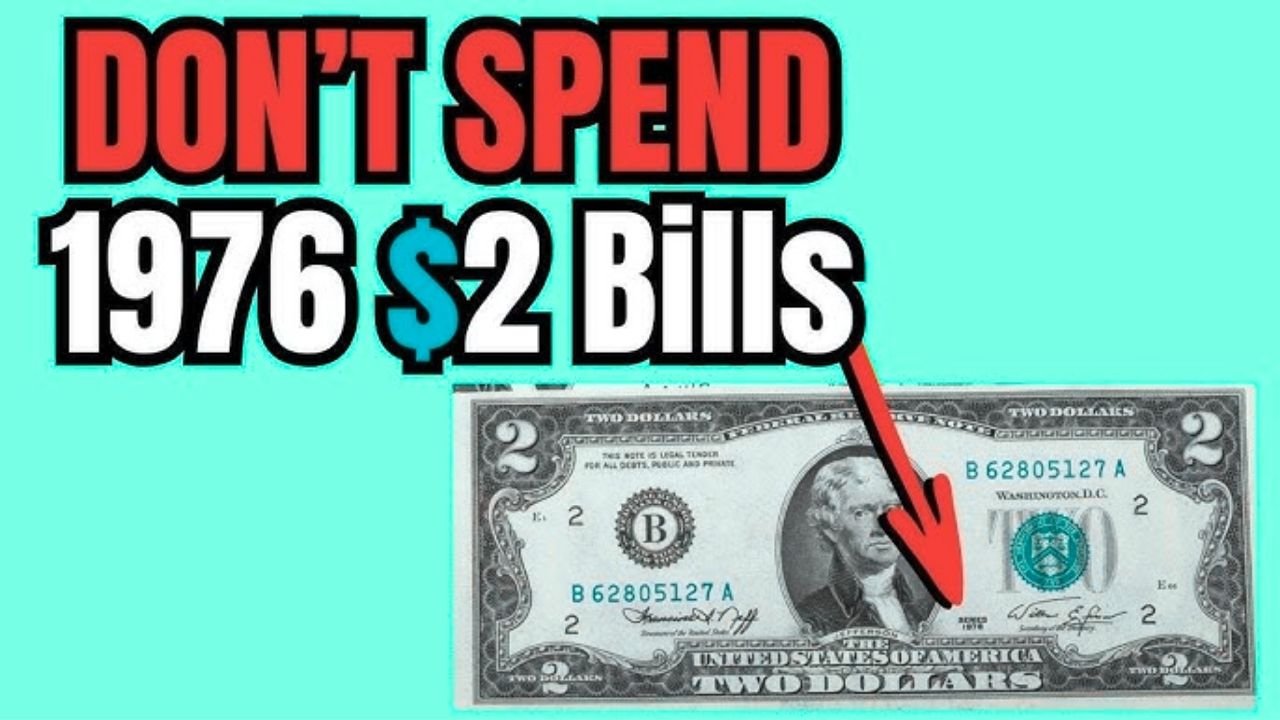A Hidden Treasure in Your Wallet
Last month, Sarah Thompson from Georgia was cleaning out an old drawer when she found a stack of $2 bills tucked inside an envelope. They were from 1976, printed to celebrate America’s 200th birthday. At first, she thought they were just cool keepsakes, but a quick online search made her jaw drop. Some of these bills, especially those with unique features, are worth thousands of dollars. Sarah’s story is sparking a wave of excitement as people across the country check their own $2 bills for a possible jackpot.
Why 1976 Bills Are Special
The 1976 $2 bill was the first of its kind as a Federal Reserve Note, released to mark the U.S. Bicentennial. With a picture of the Declaration of Independence signing on the back, it became a collector’s favorite. Over 590 million were printed, so most are worth just $2. But certain ones stand out due to rare serial numbers, printing errors, or special stamps. For example, bills from the first day of issue, April 13, 1976, often carry a postmark, making them more valuable.
What Makes a Bill Valuable
Collectors look for specific traits that boost a $2 bill’s worth. Serial numbers are a big deal; unique ones like 12345678, called a ladder note, can fetch thousands. Bills with repeating numbers, like 11111111, or star notes, which replace faulty prints and have a star in the serial number, are also prized. The bill’s condition matters too. A crisp, uncirculated bill graded high by services like PMG can be worth much more than a worn one.
| Serial Number Type | Example | Value Range |
|---|---|---|
| Ladder Note | 12345678 | $900-$3,000 |
| Repeating Number | 11111111 | $1,000-$20,000 |
Where They Came From
The 1976 $2 bills were printed by 12 Federal Reserve Banks, each marked with a letter and number, like A1 for Boston or L12 for San Francisco. Star notes from Kansas City and Minneapolis are especially sought after, with some selling for hundreds. A rare serial number 1 note from San Francisco sold for $21,150 at a 2016 auction. About 18,830 bills have been graded, with 6,040 being star notes, showing how few stand out.
| Federal Reserve Bank | Letter/Number | Star Note Value |
|---|---|---|
| Kansas City | J10 | $50-$900 |
| Minneapolis | I9 | $50-$900 |
How to Check Your Bill
If you have a 1976 $2 bill, look at the serial number first. It’s the green or black number on the front. Check for patterns like ladders or repeating digits. Next, see if it has a star at the end of the serial number. Look for a first-day stamp, usually postmarked April 13, 1976. Finally, check the condition; bills with no folds or tears are worth more. Take it to a coin shop or upload a photo to Heritage Auctions for a free appraisal.
Avoiding Common Myths
Many folks think all $2 bills are rare, but millions from 1976 are still out there, often worth just face value. Only about 1% have the special features collectors want. Online scams can trick you into thinking your bill is a fortune, so stick to trusted sources like uscurrency.gov or professional graders. Avoid cleaning or altering your bill, as that can lower its value.
What to Do Next
Sarah’s bill turned out to be a star note in great condition, valued at $150. She plans to sell it online to help with car repairs. If you find a 1976 $2 bill, check it carefully and get it appraised. You could be holding a small fortune. With collectors eager for rare finds, now’s the time to dig through your drawers or old wallets for that lucky bill.
